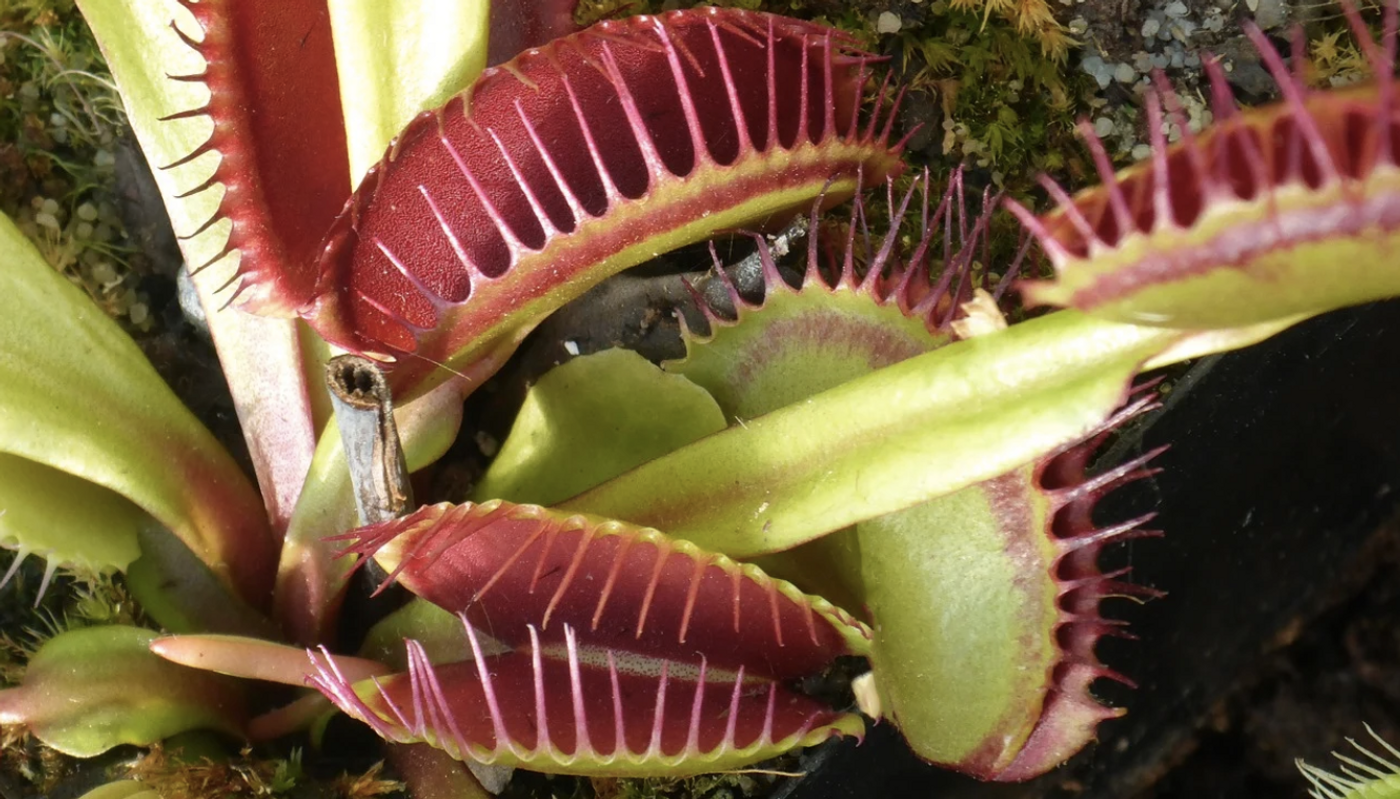The Protein That Carnivorous Plants Use To Hunt
The Venus flytrap is famous for its ability to snap its leaves shut when they're triggered by the touch of an insect. Researchers have been learning more about sensation in carnivorous plants. Reporting in eLife, investigators have now identified a protein called FLYCATCHER1 that seems to be crucial to mechanical sensitivity in plants. The work may have applications beyond plants, however.
"We know that plants sense touch," said co-corresponding author Joanne Chory, director of Salk's Plant Molecular and Cellular Biology Laboratory and holder of the Howard H. and Maryam R. Newman Chair in Plant Biology at the Salk Institute. "The Venus flytrap, which has a very fast response to touch, provides an opportunity to study a sensory modality that historically has been poorly understood."
Scientists have studied the movement of Venus flytrap leaves, but investigating their cellular mechanisms is more challenging, in part because they grow slowly. The Venus flytrap genome was also only recently sequenced.
"Because they're so unusual, people have been interested in these plants for hundreds of years, so there's quite a bit known about them at the gross, macroscopic level, but the molecular details have been hard to tease out," noted Carl Procko, a staff scientist at the Salk Institute's Plant Molecular and Cellular Biology Laboratory.
Previous studies have indicated that touch-sensitive proteins are probably able to move electrical currents across cells. In this work, the researchers used cuttings to create genetically identical flytrap clones. Then they had to remove thousands of microscopic trigger hairs that are touch-sensitive from these leaves. With genetic sequencing technology, they identified the most abundant proteins in the hairs; FLYCATCHER1 was the second most common protein. The protein was also found in the tentacles of a carnivorous plant called the sundew.
When the scientists expressed FLYCATCHER1 in cells growing in culture, the cells began to generate an electrical current when they were touched, indicating that the protein enables sensitivity to mechanical stimuli.
"These findings are further evidence that the FLYCATCHER1 protein plays a critical role in the trigger hairs of the Venus flytrap and the mechanisms of the plant that sense and respond to touch," said Chory.
In future work, the researchers are interested in proving that FLYCATCHER1 is responsible for touch sensitivity in Venus flytraps by genetically engineering them to lack the protein.
Sources: AAAS/Eurekalert! via Salk Institute, eLife









